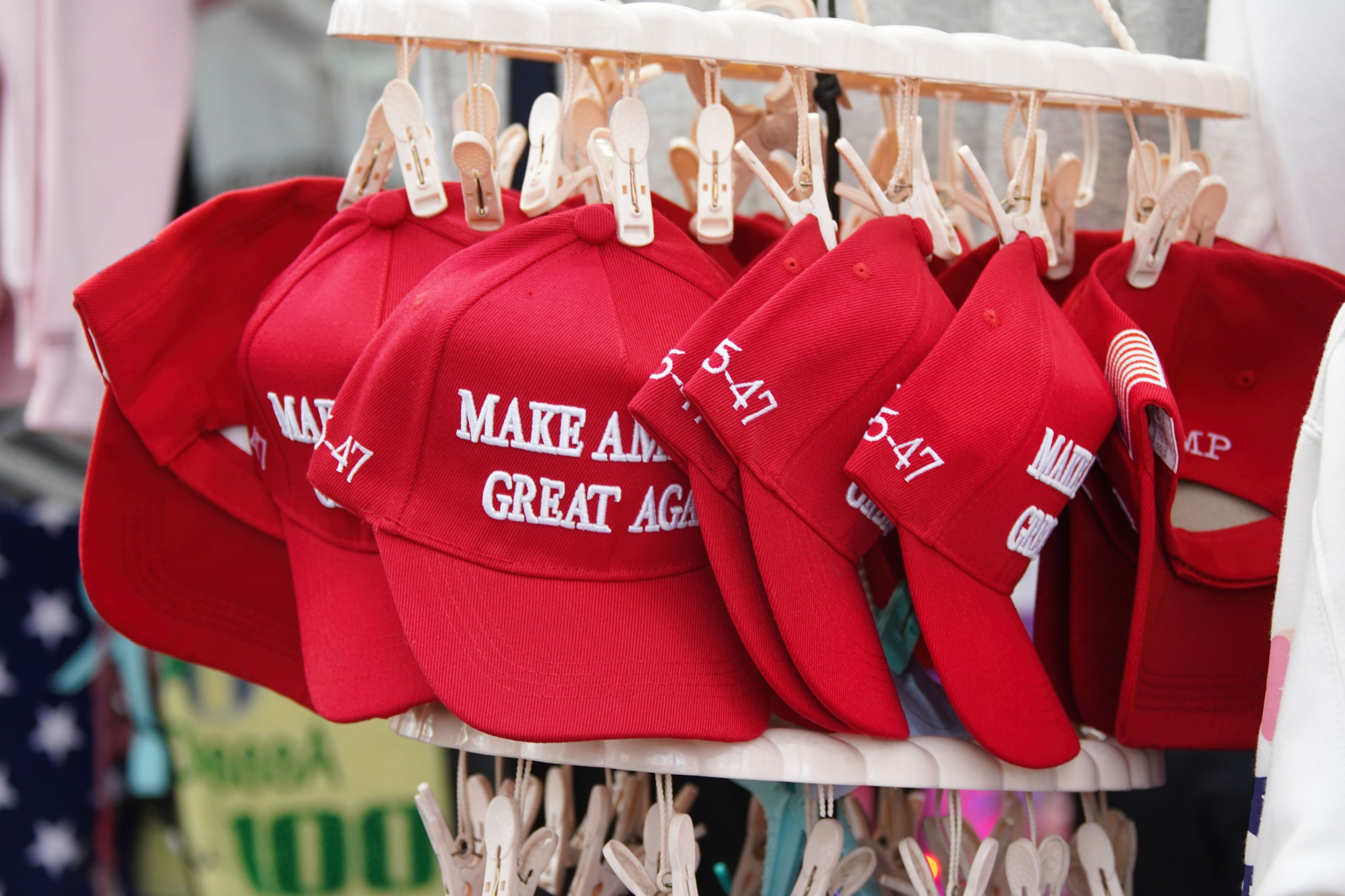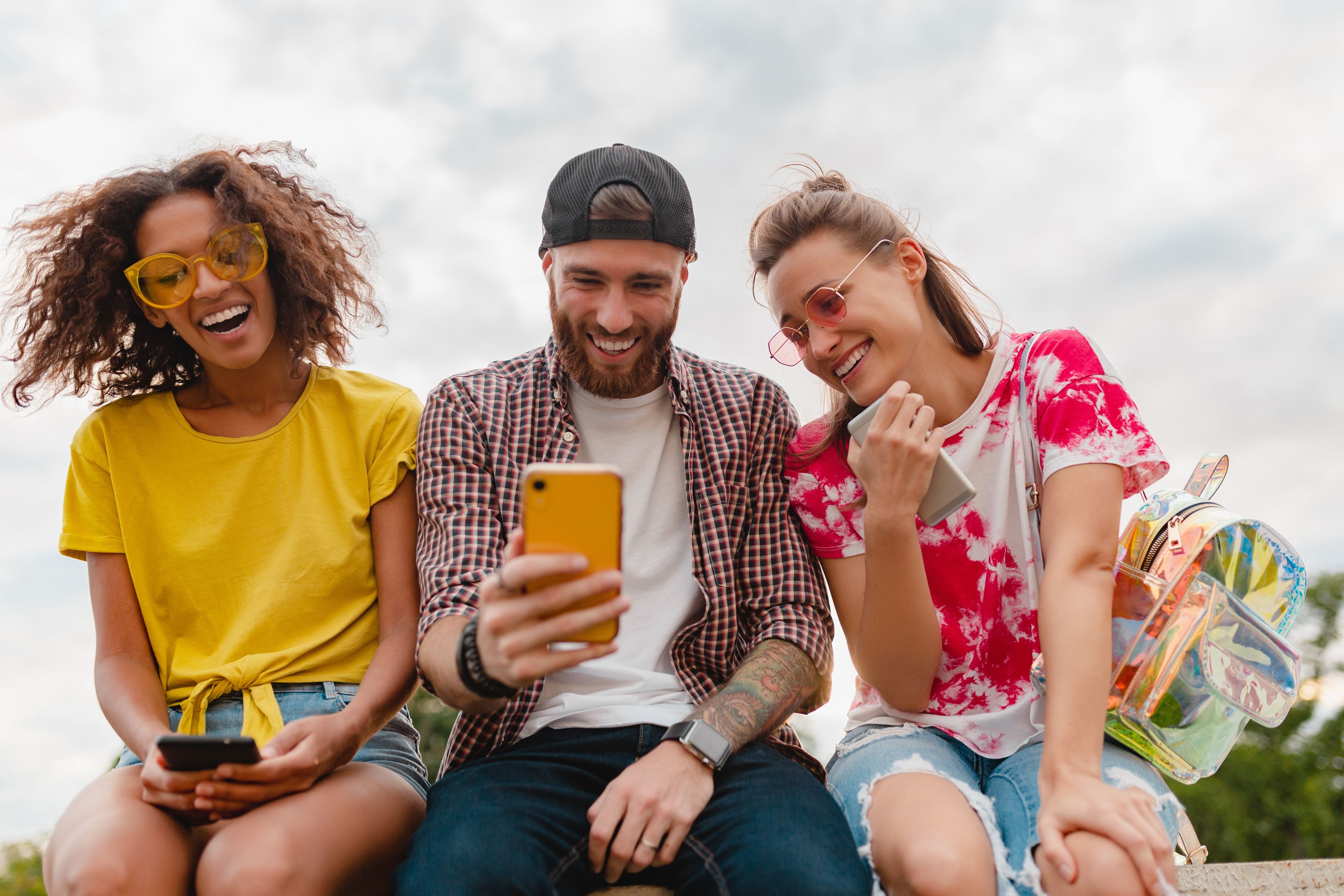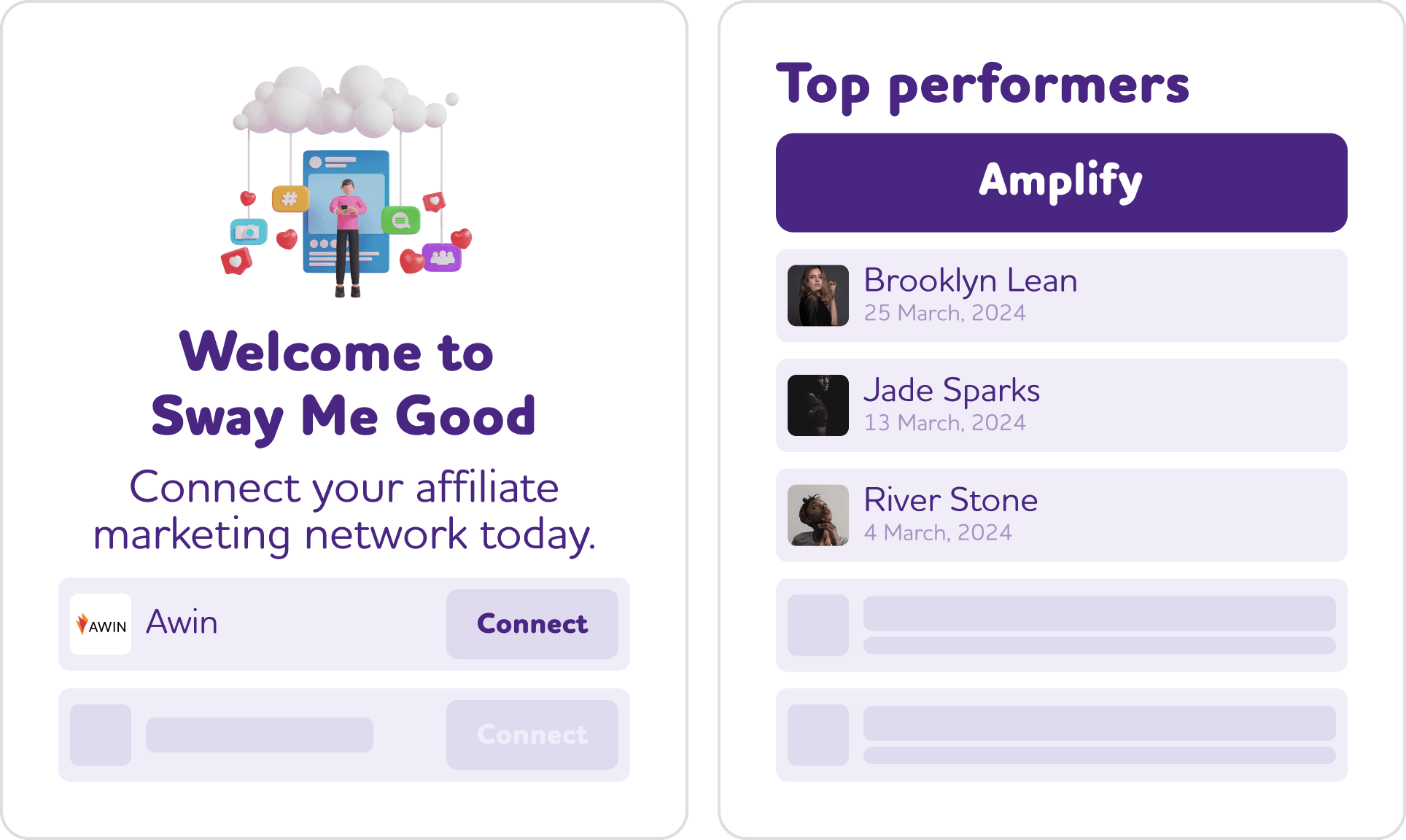Sway Me Good
Get your FREE valuation!
Earn commission by partnering with brands you love
Try our FREE Authenticity Tool here
Reserve your free 'link in bio' public profile on the web
Scalable affiliate marketing management
Data-informed influencer discovery
Delivering affiliate marketing with our network of influencers
Quick, Easy and Efficient Influencer Marketing
More efficient influencer marketing for ambitious Agencies
Blogs & News
Welcome to our Blogs - dedicated to influencers, UGC creators, ad specialists, marketers, talent managers and agencies. Get the latest industry news and articles. Find new perspectives and posts tailored for you.
Search any blog
Search any blog
Search any blog
Search any blog
All
Advertisers
Influencers

New
20 mins
How Love Island Can Inspire Your Affiliate Marketing Strategy
Love Island is the show that keeps us all glued to the TV with its dramatic recouplings and suspiciously well-timed “bombshells".

Remi
22 January, 2025

New
20 mins
What Trump’s Inauguration Teaches Us About Influencer Marketing
When high-profile events take centre stage, they do more than capture public attention.

Gad
21 January, 2025

New
The 10 Commandments of Influencer Partnerships
Teaming up with influencers can do wonders for your brand, especially when it’s more than a one-time deal.

Gad
07 January, 2025

New
30 min
Protecting Influencer's Data, GDPR & Data Protection Gold Standards
Data is king when it comes to running targeted influencer marketing, but with big data comes big responsibility.

Gad
06 January, 2025

New
30 min
Micro vs. Mega-Influencers: Which Should You Choose?
Should you work with a few mega-influencers or spread your budget across dozens of micro-influencers?

Gad
06 January, 2025

New
20 min
Crypto Influencers: Educators or Scammers?
Crypto doesn’t have to be about high-stakes speculation.but can complement traditional investments.

Gad
02 January, 2025
Load More
All
Advertisers
Influencers

New
20 mins
How Love Island Can Inspire Your Affiliate Marketing Strategy
Love Island is the show that keeps us all glued to the TV with its dramatic recouplings and suspiciously well-timed “bombshells".

Remi
22 January, 2025

New
20 mins
What Trump’s Inauguration Teaches Us About Influencer Marketing
When high-profile events take centre stage, they do more than capture public attention.

Gad
21 January, 2025

New
The 10 Commandments of Influencer Partnerships
Teaming up with influencers can do wonders for your brand, especially when it’s more than a one-time deal.

Gad
07 January, 2025

New
30 min
Protecting Influencer's Data, GDPR & Data Protection Gold Standards
Data is king when it comes to running targeted influencer marketing, but with big data comes big responsibility.

Gad
06 January, 2025

New
30 min
Micro vs. Mega-Influencers: Which Should You Choose?
Should you work with a few mega-influencers or spread your budget across dozens of micro-influencers?

Gad
06 January, 2025

New
20 min
Crypto Influencers: Educators or Scammers?
Crypto doesn’t have to be about high-stakes speculation.but can complement traditional investments.

Gad
02 January, 2025
Load More
All
Advertisers
Influencers

New
20 mins
How Love Island Can Inspire Your Affiliate Marketing Strategy
Love Island is the show that keeps us all glued to the TV with its dramatic recouplings and suspiciously well-timed “bombshells".

Remi
22 January, 2025

New
20 mins
What Trump’s Inauguration Teaches Us About Influencer Marketing
When high-profile events take centre stage, they do more than capture public attention.

Gad
21 January, 2025

New
The 10 Commandments of Influencer Partnerships
Teaming up with influencers can do wonders for your brand, especially when it’s more than a one-time deal.

Gad
07 January, 2025

New
30 min
Protecting Influencer's Data, GDPR & Data Protection Gold Standards
Data is king when it comes to running targeted influencer marketing, but with big data comes big responsibility.

Gad
06 January, 2025

New
30 min
Micro vs. Mega-Influencers: Which Should You Choose?
Should you work with a few mega-influencers or spread your budget across dozens of micro-influencers?

Gad
06 January, 2025

New
20 min
Crypto Influencers: Educators or Scammers?
Crypto doesn’t have to be about high-stakes speculation.but can complement traditional investments.

Gad
02 January, 2025
Load More
All
Advertisers
Influencers

New
20 mins
How Love Island Can Inspire Your Affiliate Marketing Strategy
Love Island is the show that keeps us all glued to the TV with its dramatic recouplings and suspiciously well-timed “bombshells".

Remi
22 January, 2025

New
20 mins
What Trump’s Inauguration Teaches Us About Influencer Marketing
When high-profile events take centre stage, they do more than capture public attention.

Gad
21 January, 2025

New
The 10 Commandments of Influencer Partnerships
Teaming up with influencers can do wonders for your brand, especially when it’s more than a one-time deal.

Gad
07 January, 2025

New
30 min
Protecting Influencer's Data, GDPR & Data Protection Gold Standards
Data is king when it comes to running targeted influencer marketing, but with big data comes big responsibility.

Gad
06 January, 2025

New
30 min
Micro vs. Mega-Influencers: Which Should You Choose?
Should you work with a few mega-influencers or spread your budget across dozens of micro-influencers?

Gad
06 January, 2025

New
20 min
Crypto Influencers: Educators or Scammers?
Crypto doesn’t have to be about high-stakes speculation.but can complement traditional investments.

Gad
02 January, 2025
Load More
A management platform to help you succeed
A management platform to help you succeed
A management platform to help you succeed
Simplify your workforce's time management with our intuitive HR Management.
Simplify your workforce's time management with our intuitive HR Management.
Simplify your workforce's time management with our intuitive HR Management.

Affiliate Marketing
Argentina
Guinea
Scotland
Ecuador
Europe
Brazil
Romania
Vietnam
Canada
Belgium
Cuba
Argentina
Myanmar
Cayman
Qatar
Honduras
Connect to our network and run influencer affiliate marketing campaigns.

Affiliate Marketing
Argentina
Guinea
Scotland
Ecuador
Europe
Brazil
Romania
Vietnam
Canada
Belgium
Cuba
Argentina
Myanmar
Cayman
Qatar
Honduras
Connect to our network and run influencer affiliate marketing campaigns.

Affiliate Marketing
Argentina
Guinea
Scotland
Ecuador
Europe
Brazil
Romania
Vietnam
Canada
Belgium
Cuba
Argentina
Myanmar
Cayman
Qatar
Honduras
Connect to our network and run influencer affiliate marketing campaigns.

Affiliate Marketing
Argentina
Guinea
Scotland
Ecuador
Europe
Brazil
Romania
Vietnam
Canada
Belgium
Cuba
Argentina
Myanmar
Cayman
Qatar
Honduras
Connect to our network and run influencer affiliate marketing campaigns.

SwayMatch AI

A match made in heaven. Work authentically, at scale.

SwayMatch AI

A match made in heaven. Work authentically, at scale.

SwayMatch AI

A match made in heaven. Work authentically, at scale.

SwayMatch AI

A match made in heaven. Work authentically, at scale.

Affiliate marketing with influencers
Learn how to scale influencer partnerships
Explore our influencer affiliate marketing capabilities today.


Affiliate marketing with influencers
Learn how to scale influencer partnerships
Explore our influencer affiliate marketing capabilities today.


Affiliate marketing with influencers
Learn how to scale influencer partnerships
Explore our influencer affiliate marketing capabilities today.


Affiliate marketing with influencers
Learn how to scale influencer partnerships
Explore our influencer affiliate marketing capabilities today.
